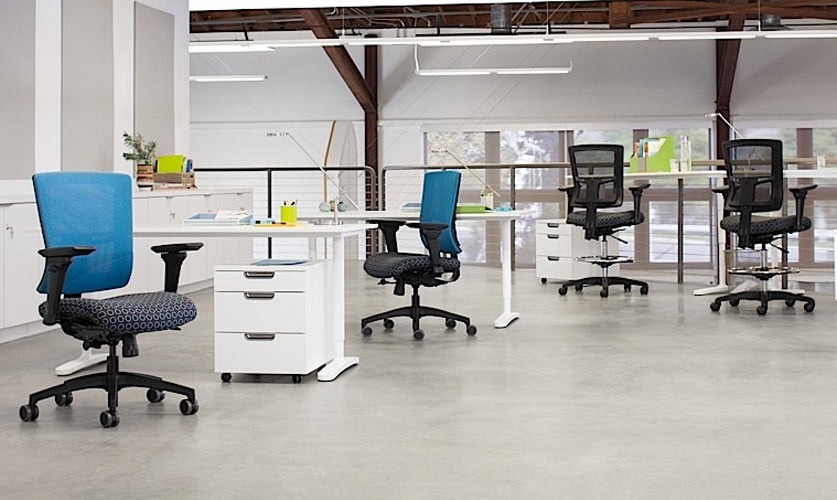

An ergonomic chair is a chair specifically designed to provide support to a wide range of people, and it features a variety of adjustable parts to enhance the comfort and well being of the user. Incorporating ergonomic office chairs within the work setting can provide employees the best lumbar, posture, and weight support, which protects them against neck, back, and leg problems that can negatively effect productivity.
In fact, when considering the type of office furniture to purchase, whether you choose used office furniture or brand new, you should consider including ergonomic office chairs as they provide a multitude of benefits. For instance, they help to ease lower back pain and help to prevent musculoskeletal disorders, such as carpal tunnel. Workers that are not in pain tend to focus on their work for longer periods of time and are able to be much more productive versus workers that are in pain and constantly shifting their sitting position, trying in vain to find relief.
There are a variety of features that determine if chair is ergonomic.
Technically, a headrest is not required for a chair to be classified as ergonomic. However, if a chair does include a headrest it must be adjustable. The purpose of a headrest is to prevent you from developing a stiff neck. Because an ergonomic chair is designed to support an array of people, you must be able to position the headrest to suit your personal sitting and working needs.
The chair’s backrest should be large enough to comfortably support your back. Additionally, the height and angle of the backrest must be adjustable for you to achieve the best possible support. It is recommended that you adjust the angle of your chair throughout your work day or leave the angle feature unlocked. This approach will help to alleviate excess pressure on your spine.
An adjustable seat height is an absolute must-have feature for an ergonomic chair. This feature allows you to either raise or lower the height of the chair to allow you to sit comfortably with your knees positioned at a right angle, either even with your hips or just below them. Finally, your feet should be flat on the floor.
An ergonomic seat pan allows you to adjust the space between the edge of the seat and the back of your knees, sometimes as little as a quarter of an inch, which allows for healthy blood flow.
This feature is extremely important as it is used to prevent the development of deep vein thrombosis (DVT). DVT is when a blood clot develops, usually within a deep vein of a leg. This can be very serious as the clot can break off and lodge within a lung.
Ergonomic arm support requires that the arm rests be adjustable via both the height and width, allowing you to comfortably rest your arms as you type.
In addition to the recommended five-point base, high-quality casters allow you to easily move back and forth and get in and out of your chair without putting extra strain on your back and legs.
Finally, because of the many benefits of incorporating ergonomic chairs into your work environment, it is important to reiterate that if budget is a concern, used office furniture is just as valid an option as new office furniture.